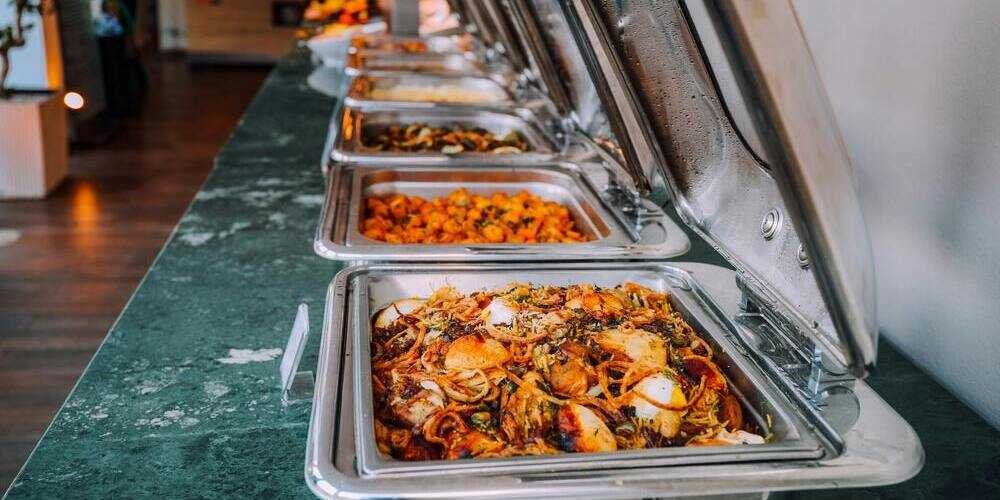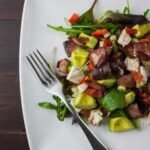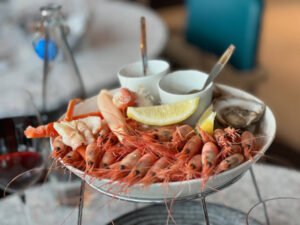
Can a Diabetic Diet Only be Insulated From Delicious Food? As Long as You Know the Portion Size, You’ll be Fine!
If you suffer from diabetes, the biggest inconvenience in your daily life is to control your diet. Nowadays, you cannot eat as much food as you want. This feeling does require a change of mood and food-taking skills to overcome. But can diabetic patients only eat less oil and salt and not eat snacks?
The myth I want to break today is that “diabetes cannot eat many foods.” Of course, you need the guidance of a nutritionist on how to choose food. Tell the nutritionist your problems and let the nutritionist teach you how to distribute your meals. You can also eat with ease. It’s fun. Today, this article will explain to all sugar lovers how to eat in daily diet to lower blood sugar and maintain muscle mass.
It’s a myth that a diabetic diet should be low in oil
It’s not that diabetics can’t eat delicious food, but they need to control their portions. Even sweets only need to be tasted lightly. They know how to use the “plus 1 minus 1 balance method”. If you add one thing, you must subtract another. The total amount control principle, or Meal insulin adjustment techniques are used to correspond to food portions, and dietary choices can be very flexible.
The correct dietary advice is not to blindly reduce fats, but to make adjustments based on individual physical conditions and consume an appropriate amount of healthy fats. For obese patients with diabetes, priority should be given to reducing excess fat, which has the highest calories in food. Reducing fat can most effectively reduce caloric intake.
In addition, people with diabetes often suffer from hyperlipidemia. Reducing the intake of saturated fat and cholesterol can also reduce the risk of cardiovascular disease.
In addition to cooking oil, meat foods and processed foods, such as bread, pastries, ice cream, vegetarian processed products (such as vegetarian meat), etc. contain fat. Even milk also contains fat. In order to achieve the goal of weight loss, these are hidden in For fats in food, pay attention to the total amount consumed. Avoiding fried foods, eating less processed foods, and reducing the proportion of meat foods are all effective ways to reduce fat intake.
Olive oil is super powerful

Regardless of whether you are fat or thin, a healthy diet should provide the body with an appropriate amount of fat. Failure to consume fat will result in nutritional imbalance and excessive weight loss. Since the calories throughout the day mainly come from the three major categories of nutrients: carbohydrates, proteins and fats, a diet that greatly reduces fat requires an increase in the intake ratio of carbohydrates and protein foods.
People who consume too little fat eat not only less meat but also boiled vegetables. This kind of diet does not take in enough calories. Although it can reduce weight in a short time, it will lead to unbalanced nutrition and muscle weakness in the long term. another health problem.
A low-fat diet tends to lead to a lack of satiety, so it is often difficult to effectively reduce the amount of sugary foods because the key staple food portions are not controlled. In addition, it is easy to get hungry. You may feel hungry before the next meal, and you will not be able to bear it. If you eat snacks after staying, your blood sugar and weight will not be reduced smoothly.
Insufficient nutritional intake causes weight loss and loss of muscle mass
In the past, people with diabetes were often warned about dietary restrictions such as less oil, less salt, less sugar, and smaller meals more frequently. Some people found it difficult to do so and simply indulged themselves; some people had very strict self-discipline and did not dare to eat anything. It has indeed improved, but in the case of insufficient nutritional intake, it has caused abnormal weight loss and loss of muscle mass.

When calculating how much fat we eat in a day, it’s not just cooking oil. The meat we eat contains more saturated fat, and nuts are rich in polyunsaturated fatty acids. Bread, biscuits, dips, salad dressings and other products also contain fat. It is actually impossible to actually calculate the proportion of fats and oils consumed, so there is no need to pursue the so-called golden ratio of oils. The more pragmatic approach is as follows:
- People with high triglycerides should use oils high in monounsaturated fatty acids for home cooking.
- People with normal triglycerides: You can prepare two types of oils to use alternately, but the oils with high monounsaturated fatty acids are still the main ones, and the oils with polyunsaturated fatty acids are supplemented. People who do not eat meat at all can also This oil method is recommended.
- Those who mainly eat vegetables or are completely vegetarian: In fact, there is no need to worry about insufficient saturated fat in the body, because eggs or milk contain saturated fat, and soybeans also contain a small amount of saturated fat.
Nuts have been listed as recommended foods that must be eaten every day by the nutrition industry. A small handful of comprehensive nuts every day also provides a lot of oil. Those who carefully control the amount of oil they use on weekdays can eat it with confidence; if they use a lot of oil or are partial to meat. If there are more, it is encouraged to use less oil and use nuts instead.












